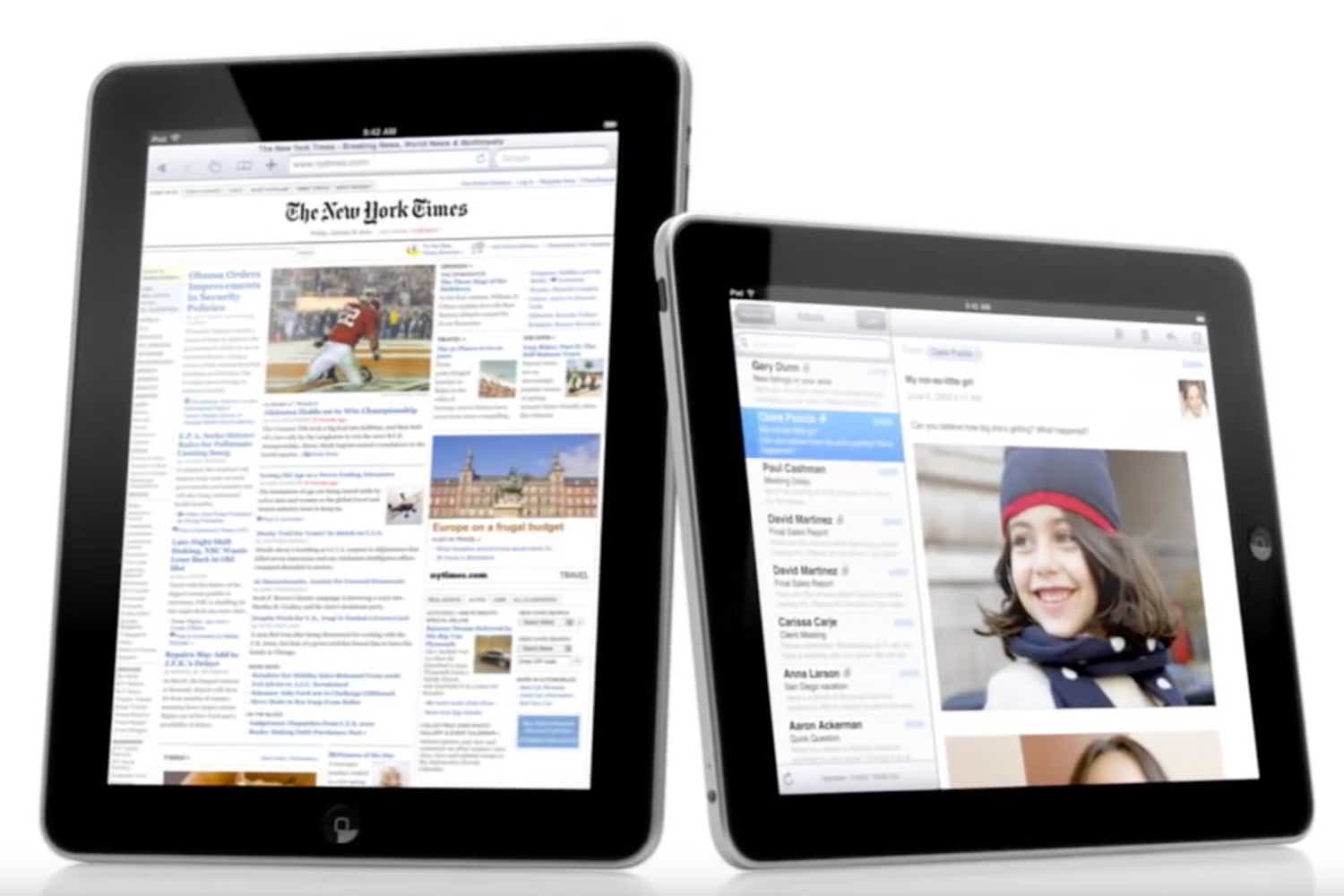The following article is excerpted from Digital Arts.
So the long-anticipated Apple iPad is finally here. It’s a device that’s supposed to take on netbooks at their own game and win, prevent working on the train or plane from being an ergonomic nightmare, and make Apple fanatics feel special again for owning one now the world has an iPhone. But it’s also a useful tool for designers, illustrators, and digital artists looking to get creative on the move.
Before we kick off, here’s a quick rundown of the what Apple has dished up. The Apple iPad is a slate PC that looks like a big iPhone. It has a home button and an aluminium bezel like a MacBook. The 9.7-inch touchscreen is made of glass. It’s only half an inch thick, and weighs about 1.5 pounds (about half a smallish laptop).
It contains a 1GHz Apple A4 chip, which is both processor and graphics. The Apple iPad will come with 16GB, 32GB, or 64GB of flash solid state storage. There’s 802.11n Wi-Fi for use at home and in cafes, Bluetooth 2.1 for keyboards and other peripherals (there’s also a hardware keyboard dock), and optional 3G for connectivity on the move. You can run iPhone apps on it, as well as iPad-specific tools such as a custom version of the iWork office suite—and download e-books like the iPhone’s capabilities for music and videos.
It costs between $499 and $829, though the 3G-capable models are being sold without being tied to lengthy contracts. (Prices and contract details outside the U.S. are not yet available.)
But what does it mean for artists?
1. It’s a digital sketchpad.
Autodesk’s Sketchbook Mobile opened up the iPhone for artists to doodle in spare moments while waiting for trains, tubes, or mates in bars or elsewhere.
The iPhone has limited touch sensitivity but its main problem for this task is the small, low-resolution screen. The iPad is much larger and offers a resolution of 1024-by-768 pixel resolution at 132 pixels per inch. It’s no mobile Wacom Cintiq though, as it’s unlikely to have a professional-level of touch sensitivity (I’m speculating a bit here, though if it had, Apple would surely shout about it).
While Autodesk hasn’t announced an iPad specific version of Sketchbook Mobile, the iPhone version will run on it. As part of the launch, Steve Jobs demonstrated the popular Brushes app on the device.
2. It’s a portable portfolio.
Again, you can use your iPod to show off your portfolio, using something like Quark’s new I Love Design app. Again, screen size and resolution are issues, so the iPad will allow you to show off your work in all its glory. Interactive designers should beware though, as with the iPhone operating system, there’s no support for Flash sites.
3. A new lease of life for design.
The nature of reading a newspaper, magazine, or book on a train means that you’ll appreciate the pleasurable layouts of print more than the strict segmented grids of Websites. Hopefully, this means that publishers will invest in design (and designers) for iPad versions of newspapers and magazines. Creating digital versions of magazines won’t be as easy as taking your print layout and exporting an iPad version along with your press-ready PDFs—even at the iPad’s 1024-by-768 resolution, an A4 magazine page with 8-point body copy won’t be readable. Whether this means more jobs for designers or cruddy replicated layouts depends on whether the interactive magazine model takes off and provides enough revenue to support good design (as well as the whims of individual publishing houses).
For interactive designers, there’s hope that the iPad will enable more creative use of interactivity. We’ve seen some incredible demos of what you can do with interactive newspapers and magazines—the best of which is Bonnier’s Mag+ —but these are so much more expensive to create than print magazines in terms of time and manpower. This will limit opportunities here to the biggest newspaper and magazine publishers only.
As with the iPhone, where the iPad will create more work for interactive designers is in creating branded projects for clients. And with Flash CS5 slated to offer a simple Output for iPhone/iPad export system, creating apps could be simpler, quicker, and more suitable for small projects than you’d expect.
4 “I’m on the train.”
Looking like a giant iPod, the iPad is ideal for recreating Dom Joly‘s classic “I’m on the train” sketch. Yeah, it’s a joke that’ll get tired quickly—all the more reason to get one quickly and get in first.
[Neil Bennett is the editor of Digital Arts magazine.]
